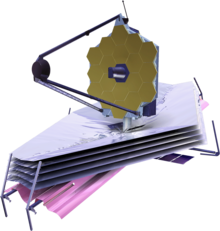
Large strategic science missions
Series of NASA missions to explore the Solar System / From Wikipedia, the free encyclopedia
Dear Wikiwand AI, let's keep it short by simply answering these key questions:
Can you list the top facts and stats about Large Strategic Science Missions?
Summarize this article for a 10 years old
NASA's large strategic science missions or large strategic missions, formerly known as Flagship missions or Flagship-class missions,[1][2] are the costliest and most capable NASA science spacecraft. Flagship missions exist within all four divisions of NASA's Science Mission Directorate (SMD): the astrophysics, Earth science, heliophysics and planetary science divisions.

"Large" refers to the budget of each mission, typically the most expensive mission in the scientific discipline. Within the Astrophysics Division and the Planetary Science Division, the large strategic missions are usually in excess of US$1 billion. Within Earth Science Division and Heliophysics Division, the large strategic missions are usually in excess of US$500 million.[3][2] "Strategic" refers to their role advancing multiple strategic priorities set forth in plans such as the Decadal Surveys.[2] "Science" marks these missions as primarily scientific in nature, under the Science Mission Directorate (SMD), as opposed to, e.g., human exploration missions under the Human Exploration and Operations Mission Directorate (HEOMD). The lines can be blurred, as when the Lunar Reconnaissance Orbiter began as a directed mission from the HEOMD, and was later transferred to the SMD.
Flagship missions are not under the purview of any larger "Flagship Program", unlike, e.g., Discovery-class missions that are under the purview of the Discovery Program. Unlike these competed classes that tender proposals through a competitive selection process, the development of Flagship missions is directed to a specific institution — usually a NASA center or the Jet Propulsion Laboratory — by the Science Mission Directorate.[2][1] Flagship missions are developed ad-hoc, with no predetermined launch cadence or uniform budget size. Flagship missions are always Class A missions:[4] high priority, very low risk.[2]